Aditya L1: How ISRO’s Sun Observatory Will Unlock the Mysteries of the Solar Atmosphere
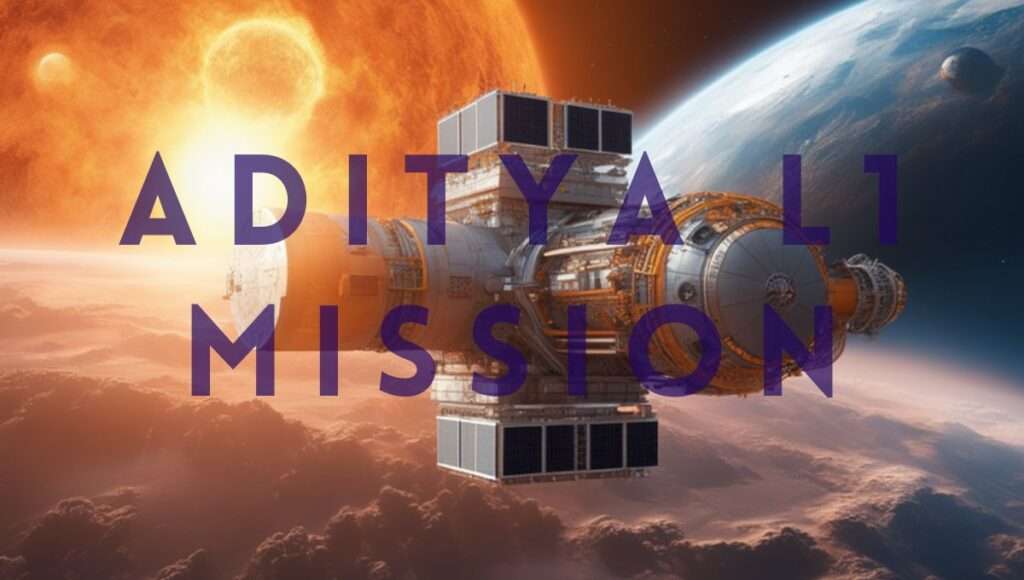
Have you ever wondered what secrets lie behind the dazzling surface of the Sun? 🤔 How does it affect our planet and our lives? 🌎 And how can we learn more about it? ☀️
If you are curious about these questions, then you are not alone. There is a team of passionate and dedicated scientists and engineers who have been working hard to answer them. They are part of ISRO, the Indian Space Research Organisation, and they have launched a groundbreaking mission to observe the Sun like never before. 🚀
This mission is called Aditya L1, and it is the first Indian mission dedicated to studying the Sun. It was launched at 11:50 AM (IST) on Saturday, September 2, from the Satish Dhawan Space Centre in Sriharikota using a Polar Satellite Launch Vehicle (PSLV) rocket. It carries seven scientific instruments that will explore various aspects of the Sun, especially its atmosphere. 🛰️
In this blog post, I will explain how Aditya L1 will help scientists unlock the mysteries of the solar atmosphere and how this mission reflects the passion and success of ISRO and its team. I will also share with you how passion is a key factor for success in any field of life, and how following your passion can lead to fulfilling your goals and dreams. 😊
What is the solar atmosphere and why is it important to study it?
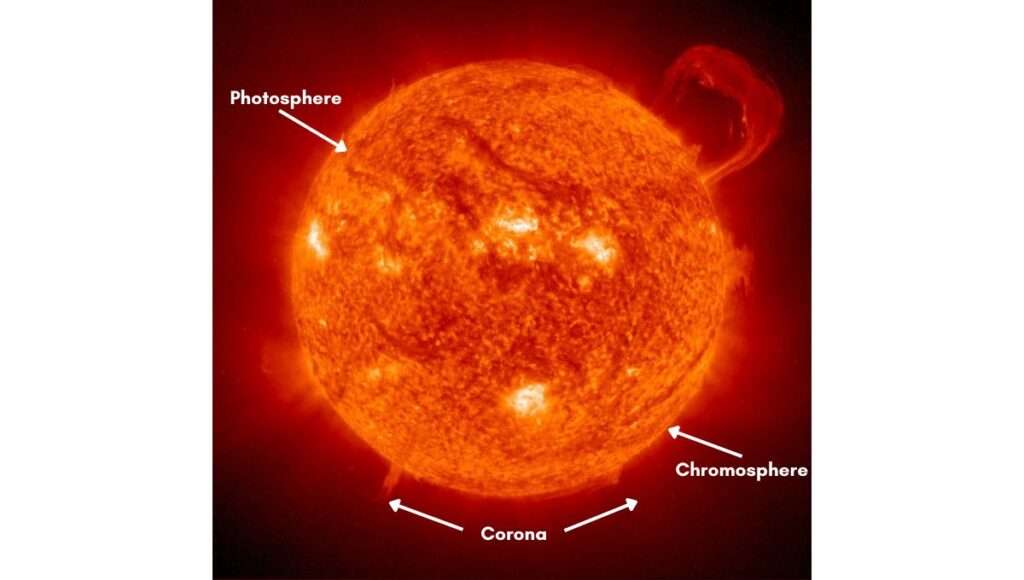
The solar atmosphere is the outer layer of the Sun that extends from its surface to far beyond its visible edge. It consists of three main regions: the photosphere, the chromosphere, and the corona. The photosphere is the visible surface of the Sun that emits most of the sunlight we see. The chromosphere is a thin layer above the photosphere that glows red during solar eclipses. The corona is the outermost layer that forms a halo around the Sun and can be seen during total solar eclipses. 🌒
The solar atmosphere is important to study because it is the source of many phenomena that affect our planet and our lives. For example, the solar atmosphere produces solar wind, which is a stream of charged particles that flows from the Sun and interacts with Earth’s magnetic field. The solar wind can cause auroras, which are beautiful displays of light in the sky, but also geomagnetic storms, which can disrupt power grids, communication systems, satellites, and navigation systems. 😲
The solar atmosphere also generates solar flares, which are sudden bursts of intense radiation and energy that can be seen as bright spots on the Sun. Solar flares can cause radio blackouts, affect climate change, and harm astronauts and spacecraft. 😱
Another phenomenon that originates from the solar atmosphere is coronal mass ejections (CMEs), which are huge eruptions of plasma and magnetic fields that can travel at speeds of up to 3,000 km/s. CMEs can cause severe geomagnetic storms, damage satellites, and even endanger life on Earth. 😨
These phenomena are collectively known as space weather, and they have significant implications for our society, economy, security, and well-being. Therefore, it is crucial to understand how they are generated and how they can be predicted and mitigated. 🙏
How will Aditya L1 explore the solar atmosphere?
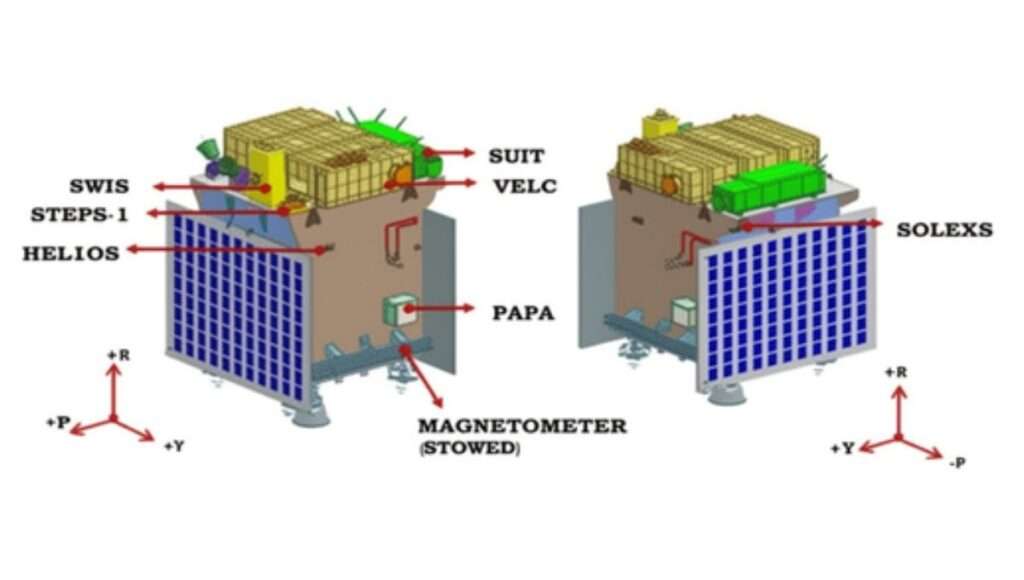
Aditya L1 will explore the solar atmosphere using its seven scientific instruments that will perform various observations and measurements. These instruments are:
- VELC (Visible Emission Line Coronagraph): This instrument will observe the corona in visible light and measure its temperature, density, velocity, magnetic fields, and CMEs.
- SUIT (Solar Ultraviolet Imaging Telescope): This instrument will image the Sun in ultraviolet light and measure its brightness variations, sunspots, active regions, and flares.
- ASPEX (Aditya Solar Wind Particle Experiment): This instrument will measure the properties of solar wind particles such as protons, electrons, alpha particles, and heavy ions.
- SoLEXS (Solar Low Energy X-ray Spectrometer): This instrument will measure low-energy X-rays emitted by the Sun and study their relationship with flares and active regions.
- HEL1OS (High Energy L1 Orbiting X-ray Spectrometer): This instrument will measure high-energy X-rays emitted by the Sun and study their relationship with flares and CMEs.
- Magnetometer: This instrument will measure the magnetic fields around Aditya L1 and study their interaction with solar wind.
- Coarse Sun Sensor: This instrument will help orient Aditya L1 towards the Sun.
Aditya L1 will orbit around a point called L1 Lagrange point, which is about 1.5 million km from Earth and 0.01 AU (about 1.5 million km) from the Sun. This point is a special location in space where the gravitational forces of the Earth and the Sun balance each other, allowing Aditya L1 to stay in a stable orbit and have a continuous view of the Sun. 🌞
Aditya L1 will be able to observe both the visible and invisible aspects of the Sun, such as its corona, magnetic fields, and particles. It will also be able to monitor the changes in the solar atmosphere over time and across different regions. It will transmit the data it collects to Earth using a high-gain antenna and a low-gain antenna. The data will be received by ISRO’s ground stations and processed by ISRO’s data centers. 📡
What are some of the expected benefits and outcomes of Aditya L1’s mission?
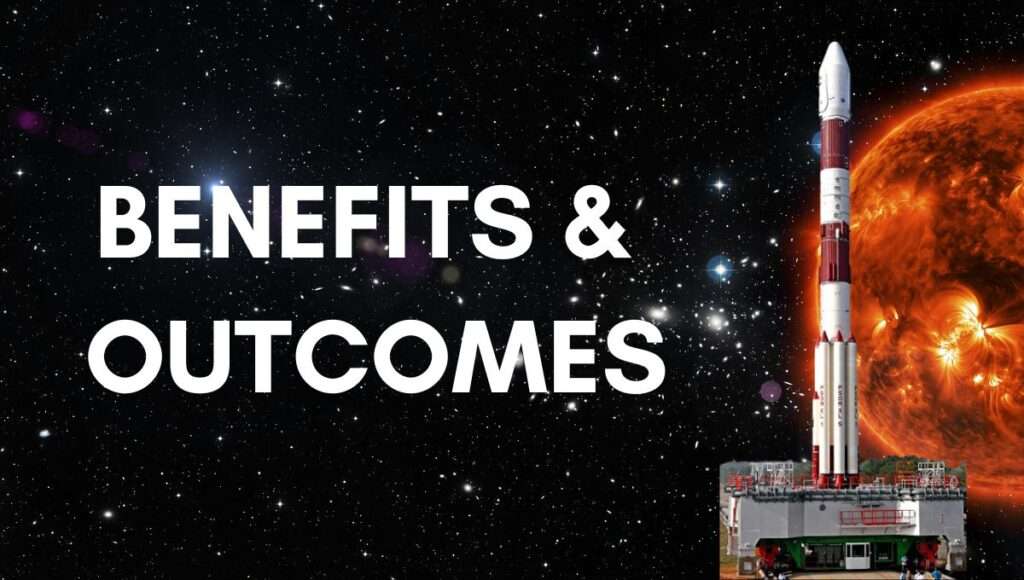
Aditya L1’s mission is expected to have many benefits and outcomes for science, technology, and society. Some of them are:
- It will improve our understanding of the solar atmosphere and its dynamics, such as how it generates solar wind, flares, CMEs, and magnetic fields.
- It will help us predict and mitigate the effects of space weather on Earth and other planets, such as geomagnetic storms, radio blackouts, climate change, and radiation hazards.
- It will contribute to the advancement of solar physics, astrophysics, space science, and engineering, by providing new data, insights, models, and methods.
- It will inspire and educate the next generation of scientists, engineers, and explorers, by showcasing India’s achievements and capabilities in space exploration.
- It will foster international collaboration and cooperation in space research and applications, by sharing data and findings with other countries and agencies.
Aditya L1’s mission is a milestone for ISRO and India, as it demonstrates their passion and success in pursuing their vision of exploring the frontiers of space. 🚀
What are the opportunities for Aditya L1’s mission?
Aditya L1’s mission is not only a challenge but also an opportunity. It offers many benefits and outcomes for science, technology, society, and humanity. Some of these opportunities are:
- Improving our understanding of the Sun: Aditya L1 will provide us with new data, insights, models, and methods to study the Sun and its atmosphere. It will help us understand how the Sun generates solar wind, flares, CMEs, and magnetic fields, and how they affect the Earth and other planets. It will also help us explore the mysteries of the corona, which is still poorly understood despite being crucial for solar physics. 🧐
- Predicting and mitigating the effects of space weather: Aditya L1 will help us monitor and forecast the changes in the solar atmosphere over time and across different regions. It will help us predict and mitigate the effects of space weather on our society, economy, security, and well-being. Space weather can cause geomagnetic storms, geomagnetic storms, radio blackouts, climate change, and radiation hazards. It will also help us protect our power grids, communication systems, satellites, navigation systems, astronauts, and spacecraft. 🛡️
- Advancing science, technology, and engineering: Aditya L1 will contribute to the development of science, technology, and engineering in India and the world. It will provide new opportunities for research, education, innovation, and collaboration. It will also demonstrate India’s capabilities and achievements in space exploration and inspire the next generation of scientists, engineers, and explorers. 🚀
- Serving humanity and society: Aditya L1 will serve humanity and society by providing valuable knowledge and information that can improve our lives and well-being. It will also foster a sense of curiosity, wonder, and awe for the Sun and the universe. It will also promote a culture of passion, excellence, and success among the people of India and the world. 🙌
Aditya L1’s mission is a golden opportunity for ISRO and India to make a difference in the world and to pursue their vision of exploring the frontiers of space. 🌍
What are the challenges of Aditya L1’s mission?
Aditya L1’s mission is not an easy one. It faces many technical and scientific challenges that require innovation, expertise, and perseverance. Some of these challenges are:
- Operating in extreme conditions: Aditya L1 will have to withstand high temperatures, radiation, and gravitational forces near the Sun. It will also have to cope with the fluctuations in solar activity, such as flares and coronal mass ejections (CMEs), which can affect its communication, navigation, and power systems. 😱
- Maintaining communication with Earth: Aditya L1 will transmit the data it collects to Earth using a high-gain antenna and a low-gain antenna. The data will be received by ISRO’s ground stations and processed by ISRO’s data centers. However, communication with Aditya L1 may not be always possible due to interference from the Sun or other celestial bodies. 😕
- Ensuring data quality and accuracy: Aditya L1 will collect huge amounts of data from its instruments, which will need to be calibrated, validated, analyzed, and interpreted. The data will also need to be compared and correlated with other sources of information, such as other solar missions or ground-based observatories. 😓
These challenges are not insurmountable. ISRO and its team have been working hard to overcome them and ensure the success of Aditya L1’s mission. They have been using their knowledge, skills, experience, and resources to design, develop, test, launch, and operate Aditya L1 with utmost care and precision. 💯
How can you support Aditya L1’s mission?
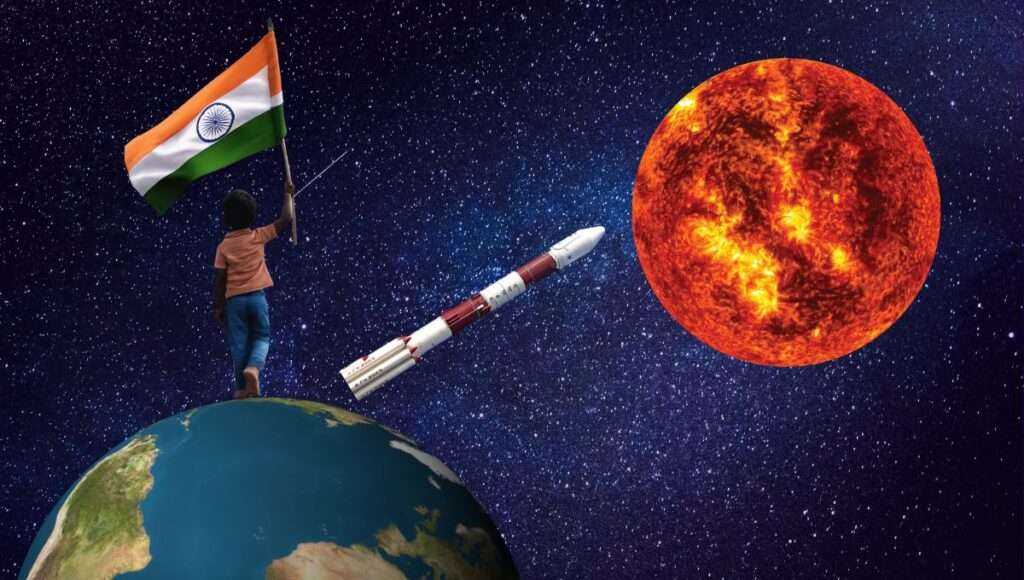
Aditya L1’s mission is not only ISRO’s mission but also your mission. You can support Aditya L1’s mission in many ways, such as:
- Learning more about Aditya L1 and ISRO: You can visit ISRO’s official website or follow their social media accounts for updates on Aditya L1 and other space missions. You can also check out some of their publications or watch some documentaries or videos about their work. 📚
- Sharing your thoughts and feedback on Aditya L1: You can share your thoughts and feedback on Aditya L1 with me in the comment section below or with ISRO through their website or social media platforms. You can also share this blog post with your friends, family, colleagues, or anyone who might be interested in Aditya L1. 🗣️
- Celebrating Aditya L1’s achievements and milestones: You can celebrate Aditya L1’s achievements and milestones by congratulating ISRO and its team, expressing your appreciation and admiration, spreading awareness and excitement, or participating in events and activities related to Aditya L1. 🎉
- Following your passion and pursuing your dreams: You can follow your passion and pursue your dreams by finding out what you love or care about deeply, by setting your goals and making plans, by taking action and overcoming challenges, by learning from your mistakes and improving yourself, by enjoying the journey and celebrating the results, by sharing your story and inspiring others. 😊
You can support Aditya L1’s mission by being part of it. You can be part of the history that Aditya L1 is making. You can be part of the passion that ISRO is showing. You can be part of the success that India is achieving. 🇮🇳
How does Aditya L1’s mission relate to passion and success?
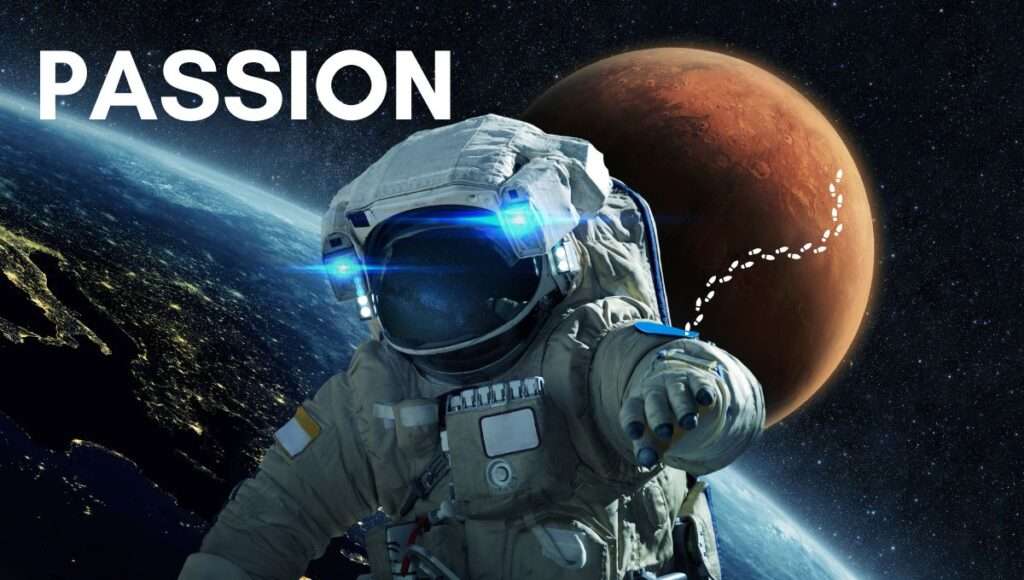
Aditya L1’s mission is not only a scientific endeavor but also a manifestation of passion and success. Passion is a strong emotion that drives us to pursue something that we love, enjoy, or care about. Success is the achievement of something that we desire, value, or aspire to. Passion and success are closely related, as passion fuels our motivation, creativity, perseverance, and excellence, while success rewards our efforts, skills, results, and impact. 😊
ISRO and its team have shown passion for their work by overcoming various challenges and achieving remarkable feats in space exploration. They have faced technical difficulties, budget constraints, resource limitations, political pressures, natural disasters, and global competition. Yet they have never given up on their dreams and goals. They have always strived to innovate, improve, learn, and grow. They have always aimed to serve the nation and humanity with their knowledge and expertise. They have always been proud of their culture and heritage. 🇮🇳
Their passion has led them to success in many ways. They have launched more than 100 satellites for various purposes such as communication, navigation, remote sensing, meteorology, astronomy, and education. They have sent probes to the Moon (Chandrayaan-1 and Chandrayaan-2) and Mars (Mars Orbiter Mission), becoming one of the few countries to do so. They have developed indigenous launch vehicles such as PSLV and GSLV that can carry heavy payloads into orbit. They have planned future missions to Venus (Shukrayaan-1), asteroids (AVATAR), exoplanets (EXPOSAT), and human spaceflight (Gaganyaan). They have received recognition and appreciation from national and international communities for their achievements. 🏆
Their success has also inspired millions of people around the world to follow their passion and pursue their dreams. They have shown that passion is not just a feeling, but a way of life. They have shown that passion can overcome any obstacle and achieve any goal. They have shown that passion can make a difference in the world. 🌍
What are you passionate about?

Passion is not limited to space exploration or science. Passion can be anything that you love or care about deeply. It can be your hobby or interest or talent or skill or profession or cause or purpose or vision or mission or anything else that makes you happy or fulfilled or satisfied or meaningful.
What are you passionate about? What makes you excited curious or enthusiastic or joyful? What challenges you motivates you or inspires you? What do you want to learn more about improve on or excel at? What do you want to share with others contribute to society or make an impact on the world? 😍
Whatever it is that you are passionate about, I encourage you to pursue it with all your heart and soul. Don’t let anyone or anything stop you from following your passion. Passion is the fuel that drives you to achieve your dreams and goals. Passion is the spark that ignites your creativity and innovation. Passion is the force that propels you to excellence and success. 🙌
Conclusion
In this blog post, you have learned Aditya L1, the first Indian mission dedicated to observing the Sun, will help scientists unlock the mysteries of the solar atmosphere and how this mission reflects the passion and success of ISRO and its team, what are the challenges and opportunities of Aditya L1’s mission, and how it reflects India’s passion and success in space exploration. You have also discovered how you can support Aditya L1’s mission by learning more about it, sharing your thoughts and feedback on it, celebrating its achievements and milestones, following your passion, and pursuing your dreams. 😊
I hope you enjoyed reading this blog post and learned something new and interesting about Aditya L1, ISRO. I hope you also felt inspired and motivated to pursue your passion and make your dreams come true. 😊
If you have any questions, comments, or feedback, please feel free to share them with me in the comment section below. I would love to hear from you and connect with you. 🙋♂️Thank you for reading and have a wonderful day! 😊

FAQs
How long will Aditya L1’s mission last?
Aditya L1’s mission is planned to last for 5.2 years, but it could be extended depending on its performance and scientific objectives.
How close will Aditya L1 get to the Sun?
Aditya L1 will orbit around a point called L1 Lagrange point, which is about 1.5 million km from Earth and 0.01 AU (about 1.5 million km) from the Sun.
How does Aditya L1 compare to other solar missions?
Aditya L1 is unique in being the first Indian mission dedicated to observing the Sun. It is also one of the few missions that can study both the visible and invisible aspects of the Sun, such as its corona, magnetic fields, and particles.
What are some of the challenges that Aditya L1 faces?
Some of the challenges that Aditya L1 faces include operating in extreme temperatures, radiation, and gravitational forces near the Sun, maintaining communication with Earth, and ensuring data quality and accuracy.
How can I learn more about Aditya L1 and ISRO?
You can visit ISRO’s official website or follow their social media accounts for updates on Aditya L1 and other space missions. You can also check out some of their publications or watch some documentaries or videos about their work.



